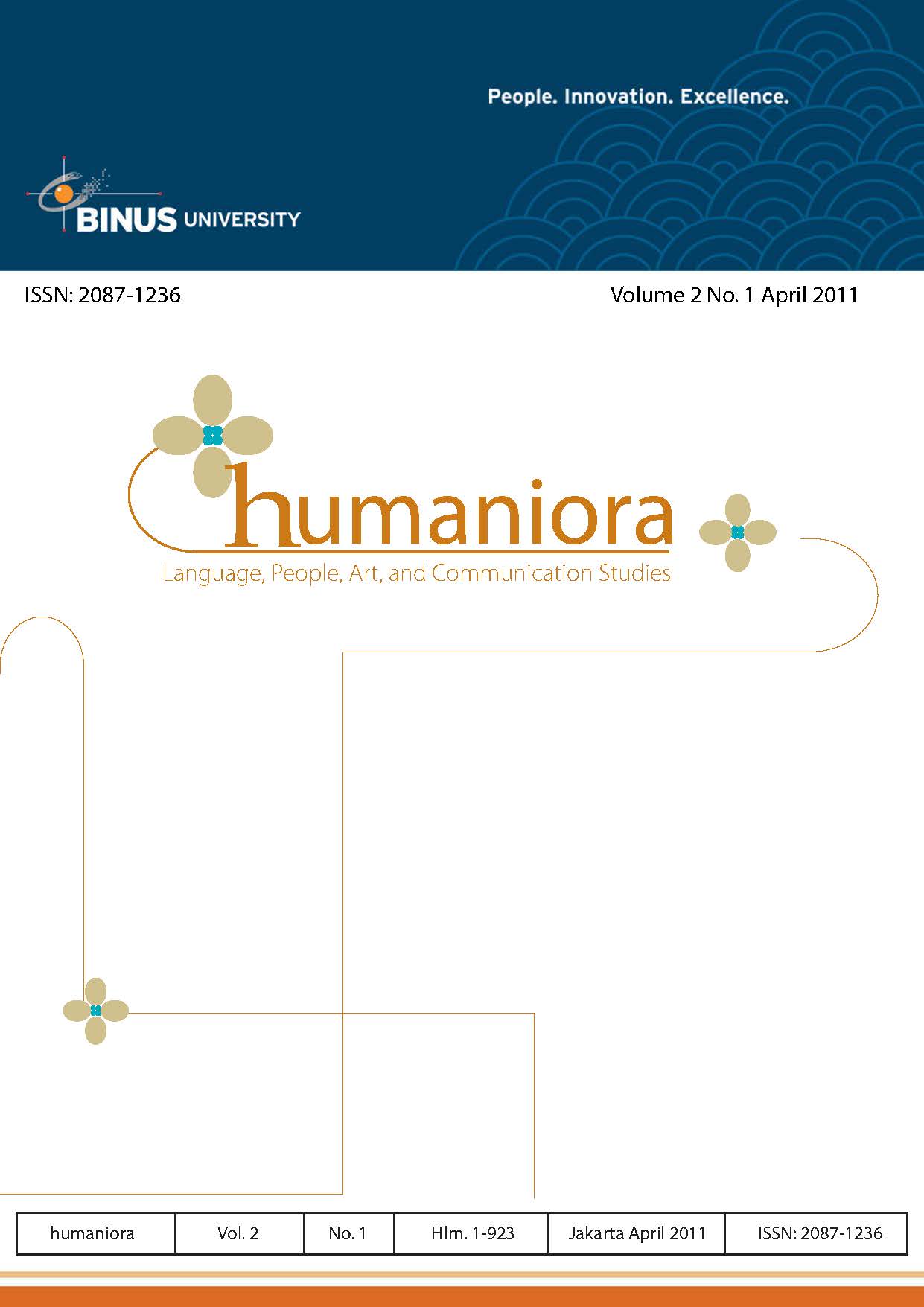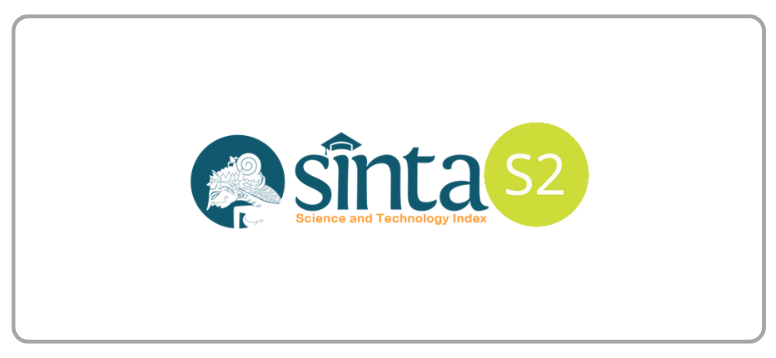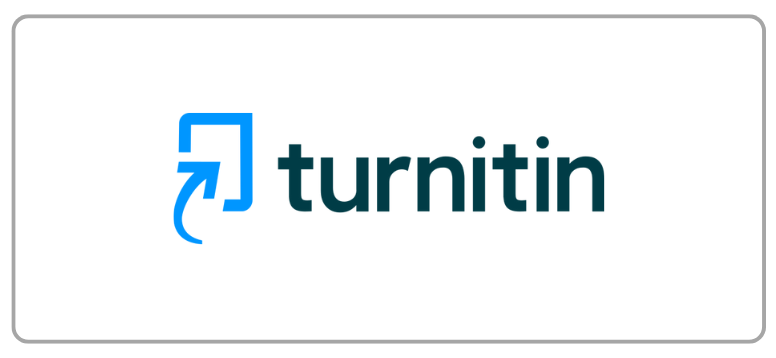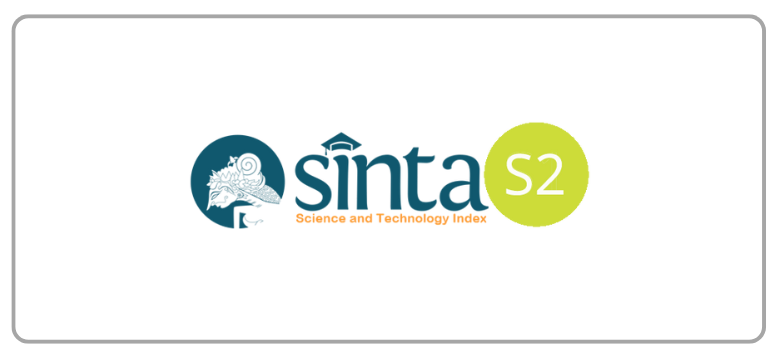Reader’s Factors in Interpreting Eldorado by Edgar Allan Poe Using Reader-Response Theory: A Preliminary Study
DOI:
https://doi.org/10.21512/humaniora.v2i1.2967Keywords:
reader-response, Eldorado, reader factors, interpretationAbstract
Article aims to find variety of interpretations on Eldorado poem, following the readers’ internal factors, such as societal norms, personal values and past experiences influence the interpretations. Data generated for this study are acquired through field research, in which questionnaires are used as data collecting instrument. The respondents are from third semester students of English Literature in Bina Nusantara University. The finding shows that interpretations of Eldorado include 44% ideas about failure, 24% ideas about perseverance, and 25.33% ideas about taking a journey. In comparison to Eldorado’s more neutral interpretation, it could be said that more respondents prefer to discuss the poem as the journey of life. It can be concluded that different societal norms, personal values and past experiences cause different kinds of interpretations, in which past experience becomes the most influential factor.
Â
References
Arp, T. R. (1997). Perrine’s sound and sense (9th ed.). Troy, US: Harcourt Brace College Publishers.
Brooks, W. (2006). Reading representations of themselves: Urban youth use culture and african american textual features to develop literary understandings. Reading Research Quarterly, 41(3), 372-392.
Cresswell, T. (2006). On the Move: Mobility in the Modern Western World, London: Routledge.
Dornyei, Z. (2001). Motivational strategies in the language classroom. Cambridge, UK: Cambridge University Press.
Harkness, J. A., Braun M., Edwards, B., Johnson T. P., Lyberg L., & Mohler P. Ph., et al., (2010). Survey Methods in Multinational, Multiregional, and Multicultural Contexts. Hoboken. US: John Wiley & Sons.
Iser, W. (1980). The act of reading: A theory of aesthetic response. Baltimore, US: The Johns Hopkins University Press.
Iser, W. (1972) The Reading Process: a Phenomenological Approach. New Literary History 3: 279-299
Kennedy, J. G. (2006). The portable Edgar Allan Poe. New York, US: Penguin Group.
Lodge, D., & Wood, N. (2000). Modern criticism and theory: A reader. Harlow, UK: Pearson Education.
Rosenblatt, L. (1994). The reader, the text, the poem: The transactional theory of the literary work. Carbondale, IL: Southern Illinois University Press. (Original work published 1978).
Sapsford, R., & Jupp, V. (2006). Data collection and analysis. London, UK: The Open University.
Selden, R., Widdowson, P., & Brooker, P. (2005). A reader’s guide to contemporary literary theory. Delhi, India: Pearson Education India.
Tompkins, J. (1980). Reader-Response Criticism from Formalism to Post-structuralism. Baltimore, US: John Hopkins University Press.
Wood, J. (2009). Those who have had trouble can sympathise with you: Press writing, reader responses and a murder trial in interwar Britain. Journal of Social History, 43(2), 439-462.
Downloads
Published
How to Cite
Issue
Section
License
Authors who publish with this journal agree to the following terms:
a. Authors retain copyright and grant the journal right of first publication with the work simultaneously licensed under a Creative Commons Attribution License - Share Alike that allows others to share the work with an acknowledgment of the work's authorship and initial publication in this journal.
b. Authors are able to enter into separate, additional contractual arrangements for the non-exclusive distribution of the journal's published version of the work (e.g., post it to an institutional repository or publish it in a book), with an acknowledgment of its initial publication in this journal.
c. Authors are permitted and encouraged to post their work online (e.g., in institutional repositories or on their website) prior to and during the submission process, as it can lead to productive exchanges, as well as earlier and greater citation of published work.
USER RIGHTS
All articles published Open Access will be immediately and permanently free for everyone to read and download. We are continuously working with our author communities to select the best choice of license options, currently being defined for this journal as follows: Creative Commons Attribution-Share Alike (CC BY-SA)



















